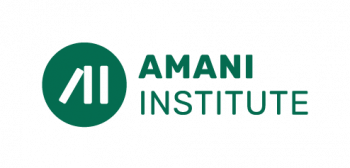When talking about education, the image that comes to mind, in general, is an elementary school classroom, with chairs, students lined up and a teacher in front. But education encompasses a broad spectrum, ranging from literacy, self-knowledge, and social-emotional skills to the so-called do-it-yourself culture.
Whatever involves “learning something” can be part of the spectrum of education. For this reason, it has a fundamental role for Social Innovation. Creating new things invariably involves a learning process. And if you are thinking about pursuing a career in the impact and innovation industry, with a focus on solving major social challenges, Amani Institute can help you through, guess what, education.
The course combines a theoretical basis with practical training. The student is at the center of everything, always. As you can imagine, it is an innovative model. The process gives you the opportunity to identify which is your burning cause or the problem that you want to solve. Which is not necessarily watertight. It can change throughout life. I, for example, thought my cause was sustainability until I get to know education and fell in love with the topic.
Over the three years that Amani has operated in Brazil, several fellows have fallen in love with education. An example is
Yvonne, a German who had a consolidated career in the public sector in Europe, left everything, came to Brazil and stayed here. She has become what she calls Life Designer and is the founder of Workinbalance, an organization that helps people draw their own lives.
Yvonne often says that innovation comes from within. “Without the right tools to lead change in your own life, it is almost impossible to solve challenges in the lives of others,” she says. With that in mind, Workinbalance offers training and workshops online and in person, individually or in groups, with a focus on self-knowledge and design.
Another way to use education as a form of social transformation is to work with peripheral communities. This is the case of the Fellow
Miguel da Hora, a young man who grew up and lives in the outskirts of Osasco, where he developed several social projects that mix technology, design, education and innovation. He is currently an educational consultant for the Inova Escola project run by the Tellus Group.
In addition, Miguel is founder of Projetistas Periféricos, an autonomous education project based on socio-emotional development for young people from the periphery. He created the low-cost education kit DAHORA KIT, which uses technologies from the fourth industrial revolution to make teaching maker more inclusive. In parallel, he develops projects and studies on futurism, focusing on making emerging technologies more accessible and understanding the future of work at the base of the pyramid.
And me, well, I’m a journalist. I worked in the private sector, in large companies for some time. Until I saw that it made no sense to me. I found Amani and a whole new way of learning. It was different from all the educational experiences I had had so far. I worked for an NGO that focused on entrepreneurship, I founded an NGO whose objective was to map initiatives of social innovation and I went to the communication area of the Lemann Foundation. There, I discovered education and how to develop the potential of people is fundamental for us to have a better country.
I have combined two passions: communication and newly discovered one, education. I understood that education is the basis of everything, any social transformation that we wanted to do. Whether it is the education represented by the image I described at the beginning of the text, the elementary school classroom, whether it is education aimed at self-knowledge, whether it is teaching maker culture and futurism, or for teaching social innovation for those who want to solve social challenges, as Amani does.
What about you? Come and join us in this adventure.
Click here to know more about the Post Graduate Certificate in Social Innovation Management.
This article was written by the Alumni Tainá Costa.





